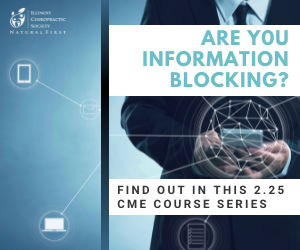
Billing the Correct Evaluation and Management CPT® Code? (Part 1)

I receive several questions each week from doctors and staff about what level of exam to bill or what needs to be documented in the patient’s file to show medical necessity for the level of exam billed to insurance. Unfortunately, these are not always simple questions to answer. Current Procedural Terminology (CPT®) lists five levels of new patient evaluation and management (E/M) codes (99201-99205) and five levels of the established patient E/M codes (99211-99215). The specifications required to meet the current E/M codes are determined by seven components. There are three key components: History, Examination and Medical Decision Making. There are three contributory components: Counseling, Coordination of Care and Nature of presenting problem and the seventh component, Time. All three key components (History, Examination and Medical Decision Making) must meet or exceed the stated requirements to qualify for a particular E/M code level for a new patient. Two of the three key components must meet or exceed the requirements to qualify for a specific E/M code level for the established patient. The exception to this rule is in cases where a patient visit consists predominantly of counseling and coordination of care.
Here is where determining what level of E/M service to code gets more complicated. Each key component (History, Examination and Medical Decision Making) has several different levels. For example, there are four levels of Medical Decision Making and to qualify for a given level of decision-making two out of the three elements of Medical Decision Making must be met. But wait, it’s not that easy. Each element of Medical Decision Making has four different levels and depending on the level met or exceeded, this will determine which type of the Medical Decision Making a physician must use to determine which E/M code to bill. Sounds confusing? It can be. In the next four articles, I’m going to break down the three key components of an E/M code and discuss what needs to be documented in a patient’s file to show that the level of E/M code billed can be medically justified. In the last article of the series, I will summarize all the information in the first three articles plus discuss the contributory components of the E/M codes and when time plays a factor in determining what level of exam to bill. I will also discuss other important documentation practices and tips used to justify medical necessity for the level of E/M code billed by the practitioner.
The History component of the E/M service (recognizes) for types of history: Problem Focused History, Expanded Problem Focused History, Detail History, and Comprehensive History. There are four “elements” to determine what type of history the physician and staff have completed. These elements are the Chief Complaint (CC), History of Present Illness (HPI), Review of Systems (ROS) and Past, Family and/or Social History (PFSH). A Problem Focused History requires only two elements of the history to be complete, the patient’s chief complaint and a brief HPI. (1) A brief HPI requires documentation of one to three HPI elements. (2) The HPI elements include location, quality, severity, duration, timing, context, modifying factors, and associated signs and symptoms. A “Problem in Focused History” is required for 99201 and a 99212 exam level. (3)
An “Expanded Problem Focused History” also requires the documentation of a chief complaint and a brief HPI, but it also requires the documentation of a “Problem Pertinent ROS”. (1) A Problem Pertinent ROS inquires about the system directly related to the HPI. An “Expanded in Problem Focused History” required for a 99202 and 99213 E/M code. (3)
A “Detailed History” requires documentation of a chief complaint, an Extended HPI, an Extended ROS, and a Pertinent PFSH. (1) An Extended HPI must have four or more HPI elements documented. An Extended ROS requires the practitioner to inquire about the system directly related to the HPI plus two to nine additional systems (2). According to the CPT® codebook the following systems have been identified: constitutional systems (a fever, weight loss, etc), eyes, ears, nose, mouth, throat, cardiovascular, respiratory, gastrointestinal, genitourinary, musculoskeletal, integumentary (skin & breast), neurological, psychiatric, endocrine, hematologic/lymphatic, allergic/immunologic. (4) A Pertinent PFSH requires the documentation of information directly related to the HPI. A “Detailed History” is required for a 99203-99214 code. (3)
A “Comprehensive History” requires documentation of the chief complaint, an Extended HPI, a Complete ROS and a Complete PS FH.(1) A “Complete ROS” requires documentation of the system(s) directly related to the HPI plus a minimum of 10 other body systems. (2) A “Complete PFS H” requires a review of all three histories. According to the CPT® codebook a complete Past Health History includes a patient’s prior major illnesses, injuries, operations, hospitalizations, as well as current medications, allergies, age-appropriate immunization status, and feeding/dietary status. (4) The CPT® code book states a complete Family History should include the health status or causes of death of parents, siblings, and children. It should also review any diseases related to the patient’s HPI and system review. Any diseases in the family that can be hereditary or place the patient at risk should also be addressed. (5) A complete social history should include an age-appropriate review of past and current information of the patient’s marital status, current and past employment, use of drugs, alcohol and tobacco, education level, sexual history and other social factors related to HPI. (4) A Comprehensive History is required to bill a 99204, 99205 and a 99215 E/M code level. (3)
The chart below summarizes the elements of each history level:
| History Level | CC | HPI | ROS | PFSH | E/M CPT® Level |
| Problem Focused | Yes | Brief | N/A | N/A | 99201, 99212 |
| Expanded Problem Focused | Yes | Brief | Problem Pertinent | N/A | 99202, 99203 |
| Detailed | Yes | Extended | Extended | Pertinent | 99203, 99214 |
| Comprehensive | Yes | Extended | Complete | Complete | 99204, 99205, 99215 |
It is important to remember that the history level is only one of the three key components in determining which level of E/M code to use. Just because you perform a Comprehensive History does not mean you can bill a 99205 code. You still must determine the level of exam and medical decision making used.
The CC, ROS, and PFSH can be on separate forms or be included in HPI. The use of forms for the ROS and/or PFSH is acceptable and can be completed by the patient or recorded by staff. It is important that the physician review information on these forms as well as sign and date each form. A ROS and/or PFSH obtained from the previous encounter does not need to be re-recorded on a re-exam if the physician reviews and updates any new information or notes that there has been no change from the previous ROS and/or PFSH along with the date and location of the earlier ROS and/or PFSH. The CC can be recorded by staff however the physician must review the chief complaint that was documented. Only the physician can record the HPI, this portion of the history cannot be completed by ancillary staff. It is also important for the physician to inquire about any information obtained in the ROS and PFSH and further document this in the patient’s file. As a physician, you are responsible for the information on the PFSH and ROS forms. For example, a contraindication for electric stimulation is a pacemaker. If a physician doesn’t review all the information provided by the patient a serious mistake can be made. The information a patient gives you on the ROS and PFSH might not only help you make a better diagnosis and help with the treatment of a patient, but it may also keep you from making a critical mistake.
In my next article, I will discuss the second key element of the E/M code, the examination and what determines the level of the exam the doctor has performed.
References
- CPT® 2010 Professional Edition, American Medical Association, p.9
- Evaluation Management Service Guide, Centers for Medicare & Medicaid Services, July 2008, p. 10
- CPT® 2010 Professional Edition, American Medical Association, p. 11&12
- CPT® 2010 Professional Edition, American Medical Association, p. 7
- CPT® 2010 Professional Edition, American Medical Association, p. 6
“CPT Copyright 2017 American Medical Association. All rights reserved.
CPT® is a registered trademark of the American Medical Association.”















